
By Cayman Islands Shipping Registry 10 Nov 2016

REG to Consolidate Yacht Regulatory Framework
The red ensign group (reg) are currently developing a new regulatory framework for yachts, titled 'red ensign group yacht code'. the rebrand recognises the work of all the red ensign members in the continual developments of the codes. it also recognises t….
The Red Ensign Group (REG) are currently developing a new regulatory framework for yachts, titled 'Red Ensign Group Yacht Code'. The rebrand recognises the work of all the Red Ensign members in the continual developments of the Codes. It also recognises the Red Ensign’s dominance of the large yacht market and the important part the codes play in establishing and maintaining this position.
This code will consolidate an updated version of the Large Yacht Code (LY3) and the latest version of the Passenger Yacht Code (PYC) to address the needs of the large yacht industry. The Cayman Islands Shipping Registry will take the lead in the secretariat function of the code on behalf of the Red Ensign Group.
This Code further develop the well-established industry standards of LY3 & PYC, combining the lessons learned from almost 20 years of regulating the large yacht sector since the first version of the Large Yacht Code was published by the Maritime and Coastguard Agency in 1997.
Highlighted in the Code are the necessary steps required to adapt to the IMO’s new four yearly adoption and amendment cycle for its Conventions to which the Codes form equivalences (SOLAS, Load Line & STCW). This will make the Large Yacht Code more dynamic to industry change and development, whilst slowing the annual PYC editions to continue to meet the new international requirements for passenger ships.
The new Red Ensign Group Yacht Code will be a code of 2 parts with common annexes such as for helicopter landing areas, enabling builders and designers to continue to recognise the familiar formats of the existing REG Codes. An updated version of LY3 in ‘Part A’ will continue to be applicable to yachts which are 24 metres and over in load line length, are in commercial use for sport or pleasure, do not carry cargo and do not carry more than 12 passengers. ‘Part B’ will consist of the latest version of the PYC applicable to pleasure yachts of any size, in private use or engaged in trade, which carry more than 12 but not more than 36 passengers and which do not carry cargo.
The new Code will make larger use of industry best practice and international standards such as ISO, as well as following the IMO's overarching remit for increased 'Goal Based Standards' as a form of regulations, allowing room for more flexibility and innovation in the design and construction of yachts.
The Red Ensign Group Yacht Code will be developed alongside the superyacht sector with a series of industry working groups, aimed at ensuring the Code is a highly developed, practicable, internationally recognised standard through industry colleagues working together exchanging knowledge and experiences.
Any queries should be sent to Jo Assael, Yacht Code Specialist at the Cayman Islands Shipping Registry, at [email protected] .
View company profile
The entity that submits this press release to SuperyachtNews.com hereby accepts sole responsibility for the facts, accuracy and completeness of the content. All content and mediums submitted are an acknowledgement of the suitability for publication. SuperyachtNews.com accepts no liability or responsibility for any inaccuracies or errors made by the submitter in this regard.
Click here to become part of The Superyacht Group community, and join us in our mission to make this industry accessible to all, and prosperous for the long-term. We are offering access to the superyacht industry’s most comprehensive and longstanding archive of business-critical information, as well as a comprehensive, real-time superyacht fleet database, for just £10 per month, because we are One Industry with One Mission. Sign up here .
Sign up to the SuperyachtNews Bulletin
Receive unrivalled market intelligence, weekly headlines and the most relevant and insightful journalism directly to your inbox.
Sign up to the SuperyachtNews Bulletin
The superyachtnews app.

Follow us on
Media Pack Request
Please select exactly what you would like to receive from us by ticking the boxes below:
SuperyachtNews.com

- SuperyachtNews
- SuperyachtIntelligence
The Red Ensign Group (REG) are currently developing a new regulatory framework for yachts, titled 'Red Ensign Group Yacht Code'. The rebrand recognises the work of all the Red Ensign members in the continual developments of the Codes. It also recognises the Red Ensign’s dominance of the large yacht market and the important part the codes play in establishing and maintaining this position.
This code will consolidate an updated version of the Large Yacht Code (LY3) and the latest version of the Passenger Yacht Code (PYC) to address the needs of the large yacht industry. The Cayman Islands Shipping Registry will take the lead in the secretariat function of the code on behalf of the Red Ensign Group.
This Code further develop the well-established industry standards of LY3 & PYC, combining the lessons learned from almost 20 years of regulating the large yacht sector since the first version of the Large Yacht Code was published by the Maritime and Coastguard Agency in 1997.
Highlighted in the Code are the necessary steps required to adapt to the IMO’s new four yearly adoption and amendment cycle for its Conventions to which the Codes form equivalences (SOLAS, Load Line & STCW). This will make the Large Yacht Code more dynamic to industry change and development, whilst slowing the annual PYC editions to continue to meet the new international requirements for passenger ships.
The new Red Ensign Group Yacht Code will be a code of 2 parts with common annexes such as for helicopter landing areas, enabling builders and designers to continue to recognise the familiar formats of the existing REG Codes. An updated version of LY3 in ‘Part A’ will continue to be applicable to yachts which are 24 metres and over in load line length, are in commercial use for sport or pleasure, do not carry cargo and do not carry more than 12 passengers. ‘Part B’ will consist of the latest version of the PYC applicable to pleasure yachts of any size, in private use or engaged in trade, which carry more than 12 but not more than 36 passengers and which do not carry cargo.
The new Code will make larger use of industry best practice and international standards such as ISO, as well as following the IMO's overarching remit for increased 'Goal Based Standards' as a form of regulations, allowing room for more flexibility and innovation in the design and construction of yachts.
The Red Ensign Group Yacht Code will be developed alongside the superyacht sector with a series of industry working groups, aimed at ensuring the Code is a highly developed, practicable, internationally recognised standard through industry colleagues working together exchanging knowledge and experiences.
Any queries should be sent to Jo Assael, Yacht Code Specialist at the Cayman Islands Shipping Registry, at [email protected] .
Company Profile
The entity that submits this press release to SuperyachtNews.com hereby accepts sole responsibility for the facts, accuracy and completeness of the content. All content and mediums submitted are an acknowledgement of the suitability for publication. SuperyachtNews.com accepts no liability or responsibility for any inaccuracies or errors made by the submitter in this regard.
More from Cayman Islands Shipping Registry
Terms & Conditions | Privacy Policy Copyright © TRP Magazines Limited, 2024.


- Loss Prevention
- Maritime Health

TT Club calls for joining efforts on proper cargo declaration

Lessons learned: Even falls from low heights can result in serious injuries

Lessons learned: Proper gas testing cannot be undertaken in six minutes
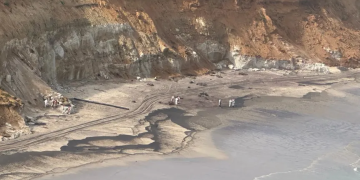
SAMSA starts efforts to remove Ultra Galaxy wreck
- Intellectual

Mindful Living: Daily tips for being in the present moment

Mindful Walking: Become aware, savor the sensations

Stay SEAFiT: Providing First Aid onboard

Psychological Safety matters: How emotions drive engagement
- Green Shipping
- Ship Recycling

DNV Maritime Forecast to 2050: Reducing energy losses on the path to net zero
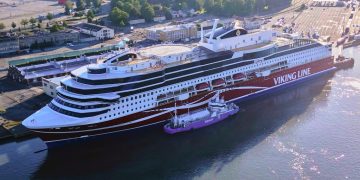
Viking Line to use liquefied biogas for a week

Biodiesel shortages threaten FuelEU 2025 goals, study finds
- Connectivity
- Cyber Security
- E-navigation
- Energy Efficiency
- Maritime Software

UK MCA enhances emergency response with new communications network
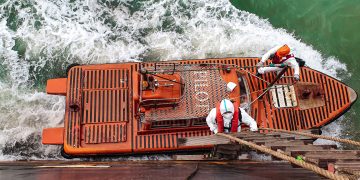
New endeavor to assess the impact of remote pilotage

Marlink unveils flexible Starlink LEO plans for hybrid network integration

How AI will affect future workforce: Key considerations for shipping
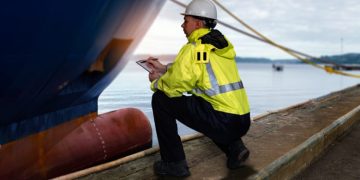
Riyadh MOU launches CIC on ship lifting appliances and loose gear

Marshall Islands: Increase in deficiencies related to ISPS Code

UK MCA: Foreign flagged ships detained in the UK during July 2024
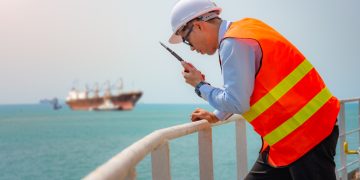
CiC on Crew Wages and Seafarer Employment Agreement: A best practice guide
- Diversity in shipping
- Maritime Knowledge
- Sustainability
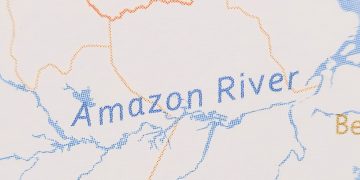
Amazon faces early drought impacting shipping and trade
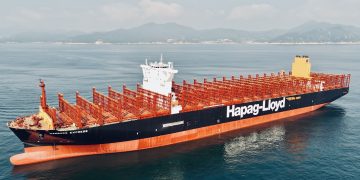
Hapag-Lloyd takes deliver of another huge container ship
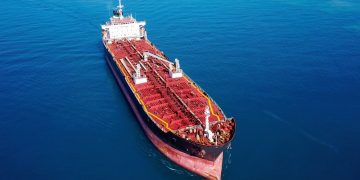
BIMCO Q3 2024: Tanker shipping market outlook

Liberian Registry: Safety is an area that requires continuous improvements
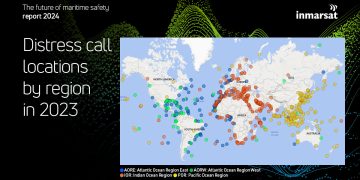
Inmarsat: Anonymised data can drive shipping’s safety culture change


Standards for ship-recycling: Key considerations for the maritime industry
Trending tags.
- Book Review
- Career Paths
- Human Performance
- Industry Voices
- Maritime History
- Regulatory Update
- Seafarers Stories
- Training & Development
- Wellness Corner
- Wellness Tips

Large Yacht Code: Retrospective requirements for existing yachts
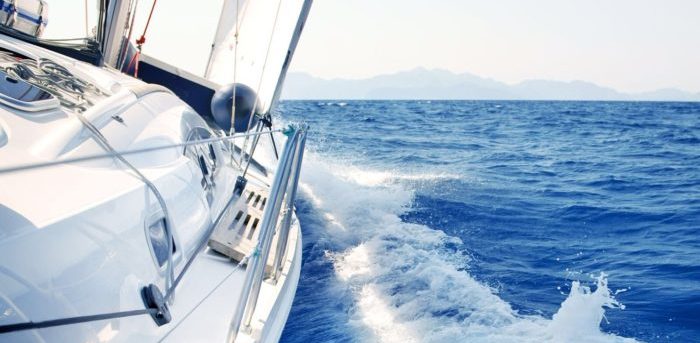
Above image is used for illustration purposes only
The Maritime Authority of Cayman Islands issued a guidance note reminding of the Red Ensign Group Large Yacht Code requirements (up to 12 passengers) which will be applied retrospectively to existing yachts at the first annual survey after 1st January 2019.
REG Yacht Codes are subject to periodic review to ensure they are aligned with new IMO Conventions, or amendments of the same, as well as modern technology and design. Following consultation with industry, the latest revision of the Large Yacht Code was released in November 2017 and came into force on 1st January 2019.

Related News
Northstandard: new ballast water requirements at santos, amsa: tips for using engine power limiters.
As per REG Code Part A Chapter 1.6 (2) the following standards are to be met by the first annual survey after 1st January 2019:
a) Section 13.5 Lifejackets b) Section 13.14 Recovery of persons from the water c) Section 13.16 Emergency training & drills d) Section 14A.2(4)(i) Materials e) Section 14A.9 Emergency training & drills f) Section 14B.25 Emergency training & drills g) Section 15A.7(4) CO2 fire extinguishing systems h) Section 15A.8 Firefighter’s communications i) Section 16.8 Availability of radio equipment j) Section 18.3 Vessels of 300GT and over have LRIT fitted k) Section 18.4 Vessels of 150GT and over have BNWAS fitted l) Section 19.1 Nautical publication m) Section 19.7 Portable atmosphere testing instruments n) Chapter 22 Protection of personnel o) Chapter 23A Vessels under 500GT, Safety Management p) Chapter 24 Manning, certification and hours of work q) Chapter 26 Operational readiness, maintenance and inspections r) Chapter 27 Medical care and carriage of medical stores s) Chapter 29 List of certificates to be issued t) Chapter 30 Survey, certification and accident investigation u) Chapter 31 International Code for the Security of Ships and of Port Facilities v) Existing sailing yachts may take advantage of the definition of a ‘Short Range Yacht’ in this version of the Code.
Find out a summary of all the requirements herebelow:
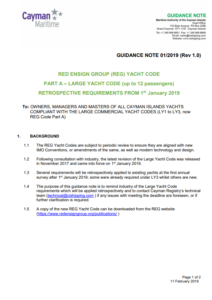
Swedish Club: Complying with the 2020 sulphur cap
Finland: 51 boaters died during boating year 2018.

Panama Canal begins long term slot allocation starting October

MTF releases key guidelines for safe liquefied hydrogen bunkering

American Club: Updated guidelines for steel cargo pre-load surveys

Cargo ship quarantined in Parana River over suspected mpox case

Revised Engine Room Procedures guide: What’s new

First aid procedures for people recovered from cold water
Leave a reply cancel reply.
Your email address will not be published. Required fields are marked *
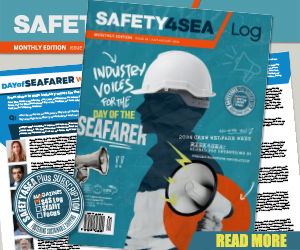
Explore more

- SAFETY4SEA Events
- SAFETY4SEA Plus Subscription
Useful Links
- Editorial Policies
- Advertising
- Content Marketing
© 2021 SAFETY4SEA
- PSC Case Studies
- Tip of the day
- Training & Development

The REG Yacht Code – Bringing Regulations Up-to-Date

The global authority in superyachting
- NEWSLETTERS
- Yachts Home
- The Superyacht Directory
- Yacht Reports
- Brokerage News
- The largest yachts in the world
- The Register
- Yacht Advice
- Yacht Design
- 12m to 24m yachts
- Monaco Yacht Show
- Builder Directory
- Designer Directory
- Interior Design Directory
- Naval Architect Directory
- Yachts for sale home
- Motor yachts
- Sailing yachts
- Explorer yachts
- Classic yachts
- Sale Broker Directory
- Charter Home
- Yachts for Charter
- Charter Destinations
- Charter Broker Directory
- Destinations Home
- Mediterranean
- South Pacific
- Rest of the World
- Boat Life Home
- Owners' Experiences
- Conservation and Philanthropy
- Interiors Suppliers
- Owners' Club
- Captains' Club
- BOAT Showcase
- Boat Presents
- Events Home
- World Superyacht Awards
- Superyacht Design Festival
- Design and Innovation Awards
- Young Designer of the Year Award
- Artistry and Craft Awards
- Explorer Yachts Summit
- Ocean Talks
- The Ocean Awards
- BOAT Connect
- Between the bays
- Golf Invitational
- BOATPro Home
- Superyacht Insight
- Global Order Book
- Premium Content
- Product Features
- Testimonials
- Pricing Plan
- Tenders & Equipment
How to choose your yacht's flag state
If you consider buying a superyacht for international cruises and chartering in the Caribbean and the Med, your lawyer or broker will tell you to register and flag the yacht offshore.
The flag you choose to fly from your transom can have a direct bearing on your privacy, taxes, exposure to liability and boarding, the vessel’s success as a commercial enterprise, and, ultimately, your enjoyment of the yacht. So how do you decide which flag best serves your purposes? There is no simple answer that covers every owner, but some basic considerations do apply.
‘The choice of flag state has, over the last few years, become one of the most important decisions owners and/or their representatives must make,’ says Mike Dean of Isle of Man-based Döhle Yachts.
A flag state is the country or governmental entity under whose laws a vessel is registered or licensed. This can be the country in which the owner resides, or more commonly in the superyacht world, an offshore ship registry in a country with laws that are attuned to the complexities of yacht ownership and charter operations.
The flag state has the authority and responsibility to enforce regulations over vessels registered under its flag, including those relating to inspection, certification and issuance of safety and pollution prevention documents.
Offshore flagging advantages
Owners who choose to flag offshore – especially those who plan to make their yachts available for charter in the EU – can benefit in many ways, including, but not limited to, mitigation of some tax burdens, confidentiality of ownership, and reassuring lenders and insurance companies. An owner who intends to operate his vessel as a private yacht and not charter might register the vessel in his home country.
However, many popular flag states have appealing and relatively simple avenues for setting up offshore corporate structures that offer favourable taxation and liability protections under a stable fiscal and legal system. In addition they have construction, inspection and regulatory compliance regimes that can streamline the process of owning and operating a large yacht.
The choice of flag state has, over the last few years, become one of the most important decisions owners and/or their representatives must make
Mike Dean, Döhle Yachts
Registering as a private yacht with a non-EU flag also allows an owner to operate under the Temporary Importation regime in Europe in which a yacht can operate for up to 18 months without the vessel being subject to customs duties or the EU’s Value Added Tax (VAT).
Owners who intend to actively pursue charter in the world’s most popular destinations – in particular, the Med, which is ringed by EU states – and the Caribbean, will generally choose to incorporate, flag offshore and register as a commercially operated vessel.
In addition to the benefits above, such structures can allow the vessel to operate within the VAT system. VAT on charters is still chargeable to the end consumer – the charterer – but the system allows operators of legitimate charter businesses to account for their input tax in the normal business sense. For instance, if a business buys food for a charter, it will pay input tax on the supply but can deduct it as an operating expense.
Good and bad flags
Registering a yacht to operate commercially subjects it to a broad range of regulations related mainly to safety.
A flag state will generally require a yacht to be in compliance with construction standards set forth by one or more of the main classification societies such as Lloyd’s Register, American Bureau of Shipping or Det Norske Veritas, as well as meeting safety and practice standards set forth by government agencies such as the UK’s Maritime and Coastguard Agency (MCA), as applied by the relevant states’ national legislation.
Choosing a particular flag is a vastly complicated matter generally settled between an owner and his attorney, but there are some basic considerations, not the least of which is the potential for the yacht to be boarded and detained by authorities. In short, there are good flags and bad flags.
‘You need to be with a flag that can provide a solid commercial registration that’s accepted in the shipping industry and accepted by the governments of the world,’ says Ken Argent of Water’s Edge Consulting Ltd.
You need to be with a flag that can provide a solid commercial registration that’s accepted in the shipping industry and accepted by the governments of the world
Ken Argent, Water’s Edge Consulting Ltd
A wise starting point would be to choose a flag on the so-called ‘White List’ as maintained by the Paris Memorandum of Understanding on Port State Control (Paris MoU).
The Paris MoU consists of 27 participating maritime administrations and covers the waters of the European coastal states and the North Atlantic basin from North America to Europe. Its mission is to eliminate the operation of sub-standard ships through a harmonised system of port state control. There are other MoU groups around the world, with similar aims.
Port officers inspect foreign ships in the Paris MoU ports, to ensure they meet international safety, security and environmental standards, and that crew have adequate living and working conditions.
Flags on the Paris White List have demonstrated strong performance in those areas and thus, are subject to fewer boardings when they enter foreign ports.
Flags on the Grey List and Black List have been deemed deficient and risk more boardings and possible detentions. Traditionally, yachts have been a low priority for Port State Control (PSC) inspections, but since the advent of the New Inspection Regime in Paris, this is no longer the case and so it is important to choose a flag with a good PSC record and a rigorous approach to safety and certification.
A wise starting point would be to choose a flag on the so-called “White List”
‘There are rogue states that remain outside the family of civilised nations, and yachts that fly those flags are not welcomed,’ says maritime attorney Michael T. Moore. ‘Generally speaking, most civilised countries have subscribed to a web of treaties designed to protect the world’s oceans from pollution, overfishing and various other unacceptable practices. Almost all seafaring nations are on the alert for out-of-pattern flags.’
Other considerations extend beyond the prospect of being boarded. ‘Lenders and insurance companies will review a flag state’s enforcement of international environment and safety and procedures and standards, compliance with international regulations and casualty record,’ says Dean. ‘A poor record will inevitably affect the decisions of the lenders and underwriters.’
The Red Ensign Group
The brokerage and management firm Edmiston Company estimates as many as 80 per cent of large yachts are flagged in the British overseas territories commonly known as the ‘Red Ensign Group’, in particular, the Cayman Islands, Gibraltar and the Isle of Man.
Factors influencing that, says Edmiston, include prestige, tradition and history; international recognition of high standards and adherence to the Large Yacht Commercial Code; ready availability of a large number of qualified surveyors; protection of British maritime law, consular services and navy; and commercial confidentiality (the owning companies can be registered in the flag state, rather than the person who owns the yacht).
As many as 80 per cent of large yachts are flagged in the British overseas territories commonly known as the Red Ensign Group
‘The Red Ensign Group uses the UK MCA’s Large Yacht Code (LYC) as the criteria for building and equipping commercial yachts,’ says Clive Harrison of Döhle Yachts. ‘The LYC has been submitted (and accepted) to the International Maritime Organisation (IMO) as the UK’s equivalent provisions under the equivalence arrangements of several international conventions (Load Lines, SOLAS and STCW).
‘Yachts built and operated under the LYC do so under internally recognised standards,’ says Harrison, ‘whilst other jurisdictions operate their own codes, these have not been presented or accepted to the IMO. Compliance with LYC can have a positive impact on resale values.’
The Red Ensign registry with the largest number of yachts is the Cayman Islands Shipping Registry. According to Peter Southgate, Advisor, Maritime Policy and Legislation Development and Shipping Master of the Cayman Registry, service is one key to the flag’s popularity.
‘The various members of the Red Ensign Group offer a very high quality flag option for any owner, and we ensure that as a group, we do not compete on quality,’ Southgate says. ‘This leaves essentially only service and the possible effects of local restrictions. For example, the UK is an EU flag and hence, temporary importation would not be available to a UK-flagged vessel.’
Flags of different colours
Most flag registries, while either an agency of a government or acting on behalf of the government, are to some extent, in competition with each other for business and offer various angles that may benefit the needs of some owners.
The Marshall Islands allows qualified private yachts to charter up to 84 days a year, but subjects them to detailed surveys heavy on lifesaving, safety and fire fighting. They also have to have a minimum safe manning certificate for when they’re chartering.
‘We look at that as an owner trying to recoup some of his expenses – not putting his yacht into a commercial mode,’ says Eugene Sweeney, senior vice president, Yacht Operations for International Registries, Inc., which provides administrative and technical support to the Marshall Islands Maritime and Corporate Administrators.
The US flag has long been problematic for ship and yacht owners due in large part to onerous regulations and manning requirements. ‘The US flag has a very unwelcoming regime of laws and regulations that make it extremely difficult for a ship of any size to be registered,’ says Moore. Matt Ruane, director of JTC Marine and Aviation, cites some specific reasons a US flag may not appeal to owners of large yachts.
If you are tempted to use the flag of a state because you like the AK-47 image on it, resist.
Maritime attorney Michael T. Moore
‘US residents often wish to purchase yachts outside the US and register on to a non-US flag in order to avoid US sales and/or use tax,’ Ruane writes. ‘US Coast Guard legislation fails to differentiate between merchant vessels and commercial yachts, meaning most large yachts would fail to meet their “Seagoing Motor Vessel” requirements, which, in essence, apply SOLAS requirements to all vessels in excess of 300GT.
‘A US-resident master and crew are required for all large yachts, unless operating privately and outside of US waters. A US flag requires US corporate or private ownership, and the concept of nominee directors and shareholders is less understood and thus, less acceptable, essentially meaning that US corporate ownership is more transparent.’
The actual cost of flagging offshore is relatively low, provided your yacht meets class requirements, which is something an owner would want to consider especially when buying a brokerage yacht. The cost of bringing a yacht up to class can be substantial.
Choosing a flag is a matter best undertaken under counsel of a maritime attorney. There are many possible avenues depending on an owner’s intended use and other considerations, but at the end of the day, most advise sticking with the tried and true.
‘If for whatever reason you are tempted to use the flag of a state because you like the AK-47 image on it,’ says Moore, ‘resist.’
Originally published: Superyacht Owners’ Guide 2012.
Sign up to BOAT Briefing email
Latest news, brokerage headlines and yacht exclusives, every weekday
By signing up for BOAT newsletters, you agree to our Terms of Use and our Privacy Policy .
More stories
Most popular, from our partners, sponsored listings.
- Shopping Cart
- Facebook LinkedIn

Frequently Asked Questions
Every Cayman Islands Ship shall carry insurance cover against risks of loss or damage to third parties. All vessels with a gross tonnage of 1000 or greater are additionally required to carry third party (Protection and Indemnity (P&I)) insurance to meet their liabilities under the Bunkers Convention and evidenced by a Certificate issued by the CISR. Please see Shipping Notice: CISN 01/2012 (Rev 1.1) regarding Insurance Requirements for Cayman Islands Vessels.
If the vessel maintains a Certificate of Code Compliance (LY2/LY3) the vessel should maintain the manning levels as indicated in the Minimum Safe Manning Document. If it is privately operated the yacht can replace the Certificate of Code Compliance with a Statement of Compliance if it does not wish to comply with the manning requirements. Please also see Shipping Notice 02/21012 regarding Manning for yachts carrying 12 passengers or less on the commercial part of the register as "Commercial Vessels" or which are engaged in trade.
Yes. See MLC Guidance Letter
Yes, the Convention on the International Regulations for Preventing Collisions at Sea (COLREG), prescribes safe measures for visibility, navigation and sound signalling to ensure safe navigation for all users of the world’s oceans.
Yes, MARPOL applies to all vessels, commercial and pleasure, however only yachts over 400 GT are required to be certificated.
Yes. However, a yacht can only be issued with one Certificate of Registry at a time. In order for the yacht to be registered as a commercial vessel it must be in possession of valid certificates appropriate to its size. For yachts over 500 GT, this includes, but is not limited to, a Safety Management Certificate, an International Ship Security Certificate, a Continuous Synopsis Record, Maritime Labour Certificate (when applicable) and a Minimum Safe Manning Document. These Certificates must remain valid for the duration of the period that the yacht remains registered as a commercial vessel. The Certificate of Registry which is not in current use must be returned to Cayman but can then be re-issued on application.
No, Cayman does not require that the yacht engage in trade.
No, the vessel may remain on the Pleasure Yacht Register, but the yacht must have valid Large Commercial Yacht Certificates appropriate to the size of the vessel and be manned in accordance with Cayman Manning Regulations and LY3 requirements.
The periodic inspections can be carried out within 3 months either side of the anniversary date, which corresponds to the expiry date of the certificate otherwise the certificate becomes invalid.
Large Commercial Yacht Certificates are valid for a maximum of 5 years subject to periodic inspections followed by a renewal survey at the end of the 5 years.
See Matrix of International Conventions Applicable to Yachts.
Yes, many owners will build to the Code or bring their yachts into the Code, for a number of reasons, including the peace of mind of knowing their yacht complies with an internationally recognised safety standard. Other reasons include vessel resale value maximisation and risk management issues such as risk mitigation.
When the yacht is engaged in trade/commercial activities, such as chartering-out. Further details are available in Shipping Notice CISN 14a/2004 (2010 Version) - Large Private and Commercial Yachts Compliance with Regulations
LY1 is the abbreviated term used to refer to the original Large Commercial Yacht Code which came into effect in December 1998. LY2 is the abbreviated term for the revised Code, which came into effect in September 2004. LY3 is the abbreviated term for the revised Code, which came (or comes, depending on the time of the web-site update) into effect in August 2013.
This Code of Practice was introduced in 1998 (as an equivalent approach) to address the requirements of SOLAS, International Load Line Convention (LL 66) and the STCW Convention in a yacht-specific manner. IMO Circular letter 1966 dated 27th July 1997 gave effect to the Code as equivalence on an international basis.

Red Ensign Group releases updated Yacht Code for 2024
11 January 2024
The Red Ensign Group (REG) has released an updated version of its flagship Yacht Code, a comprehensive framework that establishes the benchmark for safety and design standards in the yachting industry. The new revision, representing the collective expertise gained across nearly three decades of regulatory experience since its initial publication in 1997, marks the first major update since 2019.
Developed over a two-year period in close consultation with the REG Yacht Code Industry Working Group, a broad-based forum encompassing shipyards, designers, management companies, and regulatory authorities, the revised Code incorporates substantial changes to reflect recent amendments issued by the International Maritime Organization (IMO) and accommodate current trends and innovation in yacht design.
To ensure consistent application and a level playing field across the industry, the revision provides further clarification to areas of the Code that were previously open to interpretation. While the updated document is now available, it will not come into full force until July 2024, allowing the industry ample time to familiarise itself with the new guidelines and make any necessary adjustments.
A spokesperson for the Red Ensign Group emphasised the Code's dual focus on safety and innovation:
"The REG Yacht Code is the international standard for the design, construction, and operation of these vessels. We will never compromise on safety and crew welfare and maintain the highest maritime regulatory standards. However, we do recognise that it's important to support innovation and technological developments in a rapidly changing industry."
This commitment to both safety and innovation reflects the REG's dedication to fostering a thriving and responsible superyacht sector that prioritises the well-being of seafarers and upholds the highest standards of maritime safety. The updated Yacht Code serves as a testament to the REG's commitment to ensuring the continued success of the global yachting industry.
To stay updated with the latest industry developments, be sure to sign up to our newsletter . You can also join the PYA as a member and access numerous services including our MCA and Transport Malta approved Sea Service Verification .

Statement from the Professional Yachting Association (PYA) regarding the tragic sinking of Bayesian
Antibes (France), 26 August 2024 - In light of the recent tragic sinking of the yacht Bayesian and loss of lives, we understand that many are deeply concerned and eager to know the details surrounding this unfortunate event. However, we urge everyone—media, the public, and all interested parties—to refrain from speculating on the causes, responsibilities, or circumstances until the official inquiry is concluded.

PYA Agents Network around the world
As the season begins and you embark on your global travels, we want to ensure that our PYA members have access to essential services. To facilitate this, we have enlisted a network of PYA Agents located around the world. These agents specialize in certifying original documents, helping you maintain accurate profiles and supporting your MCA applications.

A surge in unqualified crew with fake or purchased CoCs
The Professional Yachting Association (PYA) and the Italian Yacht Masters Association (IYM) sound the alarm on a hidden danger: a surge in unqualified crew with fake or purchased Certificates of Competence, which raises potential safety issues for crew, passengers, and vessels.

- Career Advice
- Salary Guide
- Dockwalk Presents
- Digital Dockwalk
The Passenger Yacht Code
After three years of development, the British Red Ensign Group (REG) has published a draft of a Passenger Yacht Code, which will tackle the matter of yachts carrying more than 12 passengers, but no more than 36. Comments are being received on the draft until September 10 and the final version is set to be published later this year. Read the current version of the Code here: http://www.redensigngroup.org/about_us/reg-passenger-yacht-code.htm
Following is the official press release from REG:
PRESS RELEASE ON THE PASSENGER YACHT CODE (PYC)
The yachting industry has for some time been aware of the development by the British Red Ensign Group[1] (REG) of a Code for the technical standards to be applied to Passenger Yachts carrying more than 12 but not more than 36 passengers. The Code has now reached an advanced stage of development and the current draft (i.e. Passenger Yacht Code – Distribution Version 3) (PYC – DV3) is now available on the REG and the Cayman Islands Shipping Registry (CISR) website at ( www.redensigngroup.org ) and ( www.cishipping.com ) respectively. The Code has been developed to address the difficulties in applying some of the international Convention standards (in particular the Safety of Life at Sea (SOLAS) Convention and the Load Line Convention), which were designed for “merchant” ships, to the present day “super yacht”. The Code in no way dilutes Convention standards but provides equivalent standards and arrangements, where appropriate, aimed at addressing in a pragmatic and practical way the challenges imposed by the design operation and usage off today’s large yachts. The Code provides standards for both privately operated and commercially operated yachts. After further industry consultation it is expected that the Code will be published by the REG and lodged, by the UK on behalf of the REG, with the International Maritime Organization (IMO) by November of this year as the “official” REG wide equivalent for this type of vessel. By way of comparison the PYC may be viewed as a natural progression, although philosophically very different, from the very successful UK “Large Yacht Code” which sets out standards for commercial yachts over 24m, less than 3000gt and carrying not more than 12 passengers – this is being revised over the next few months.
Greg Evans, Director-Global Safety & Compliance, Cayman Islands Shipping Registry commented: “The Code has been developed in response to industry’s desire to have a single reference document for the construction and operation of large passenger yachts and represents a collaborative effort amongst members of the Red Ensign Group who collectively have a significant amount of experience in the very large yacht market. We are very excited by this development which represents some 3 years work to develop a pragmatic approach to an emerging demand for larger yachts, but ensures the highest safety standards are maintained for which the “Red Ensign” is well known.”
[1] The REG comprises the category one registers of Bermuda, British Virgin Islands, Bermuda, Cayman Islands , Isle of Man and the United Kingdom; and the category two registers of Anguilla, Falkland Islands, Guernsey, Jersey, Montserrat , St. Helena and the Turks and Caicos Islands
More from Dockwalk

- Latest News
New Red Ensign Group Yacht Code launched
Teamwork between members of the Red Ensign Group (REG) and the industry as a whole has led to the creation of a new yacht code.
The REG Yacht Code, which is being launched today (13 Nov) at the Global Superyacht Forum in Amsterdam has taken into account all the expertise gained across almost two decades of regulating the large yacht sector since the first version was published by the Maritime & Coastguard Agency in 1997.
In its new format, the Code is made up in two parts with common annexes - such as for over-side working systems, sailing vessels and helicopter landing areas. It will keep the familiar format of the existing REG codes while being more dynamic to industry change and development.
Work has been carried out across the REG to get the new code ready for its launch and also within the industry. One consultation alone brought in more than 700 comments as part of that active discussion with those involved with large yachts.
The new REG Code combines the existing Large Yacht Code 3 and the Passenger Yacht Code into one document and will come into force on 1 January 2019, to give the industry time to become familiar with it.
Sir Alan Massey, CEO of the Maritime & Coastguard Agency said: 'In the superyacht sector, the Red Ensign is the flag of choice and its yacht code is the international standard for yacht construction and operation.
'This has been an excellent example of how well the Red Ensign Group works both together as a team and also with the wider industry to make sure we continue to be that. We maintain the highest maritime safety standards but also recognise that we must take into account a changing industry.
'This represents a lot of work over many months and includes many innovative measures to meet the specific needs of the Large Yacht Sector. The Red Ensign Group has made a point of listening to the industry to create this code and all of us will continue to listen to help support the industry to get ready for it as it comes into force.'
Jo Assael, senior surveyor and yacht code specialist for the Cayman Islands Shipping Registry, worked with industry to help shape the new code.
He said: 'We wanted to make the code more usable and wrote in greater flexibility so that naval architects, designers and owners can get what they want out of a superyacht. It was important to make sure that we are regulating for today and not for how yachts were being built when this code first came out in 1997.
'Although the codes remain mostly the same, we want to make sure that within this prescriptive framework, we have equivalent arrangement clauses. These support innovation and point to alternative SOLAS design routes as an alternative which would be just as safe as the prescriptive one.
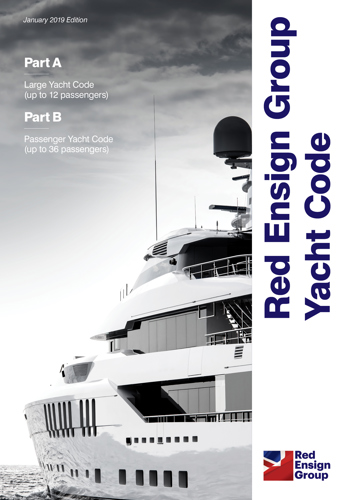

IMAGES
COMMENTS
The Large Commercial Yacht Code Applicable to yachts which are 24 metres and over in load line length, are in commercial use for sport or pleasure, ... British Virgin Islands, Cayman Islands, Falkland Islands, Gibraltar, Montserrat, St Helena and the Turks & Caicos Islands . 6
Red Ensign Group Yacht Code Part A (Page 1 of 208) January 2019 Edition . Red Ensign Group Yacht Code ... During 2016 and 2017, the Red Ensign Group (REG) has been working alongside the Large Yacht industry to develop this 'REG Yacht Code'. This new Code consists of two parts; Part A, being an ... British Virgin Islands, Cayman Islands ...
Registry (CISR). It is Cayman Islands policy to provide a MSMD for all pleasure yachts of 24 metres and over certified in accordance with the Large Commercial Yacht Code, MSMDs are only issued after consultation with the Owner or Manager. Your Classification Society and other organisations are not permitted to issue MSMDs for Cayman Islands yachts.
Large is 24 metres and over in load line length and the Code of practice applies for Yachts which are in commercial use for sport or pleasure, ... − Cayman Islands − Isle of Man. Where "Administration" is used in the Code, it applies to the United Kingdom of Great
passenger/cargo vessels) sectors of the industry. Yachts which comply with the Code do not have to comply with the requirements of the HSC Code. During 2022 and 2023, the Red Ensign Group (REG) worked alongside the Large Yacht industry to develop this revision of this Edition of the 'REG Yacht Code'. This Code consists of two parts; Part
Red Ensign Group Yacht Code Part B (Page 1 of 206) January 2019 Edition . Red Ensign Group Yacht Code ... During 2016 and 2017, the Red Ensign Group (REG) has been working alongside the Large Yacht industry to develop this 'REG Yacht Code'. This new Code consists of two parts; Part A, being an ... British Virgin Islands, Cayman Islands ...
With the recently announced Red Ensign Group (REG) Code, to which the Cayman Islands Shipping Registry is taking the lead in the secretariat role, the group hopes to address certain frustrations associated with superyacht construction within a new regulatory framework for yachts. The new code will consolidate an updated version of the Large ...
PART A - LARGE YACHT CODE (up to 12 passengers) RETROSPECTIVE REQUIREMENTS FROM 1st January 2019 To: OWNERS, MANAGERS AND MASTERS OF ALL CAYMAN ISLANDS YACHTS COMPLIANT WITH THE LARGE COMMERCIAL YACHT CODES (LY1 to LY3, now REG Code Part A) 1. BACKGROUND 1.1 The REG Yacht Codes are subject to periodic review to ensure they are aligned with new
The Cayman Islands Shipping Registry will take the lead in the secretariat function of the code on behalf of the Red Ensign Group. This Code further develop the well-established industry standards of LY3 & PYC, combining the lessons learned from almost 20 years of regulating the large yacht sector since the first version of the Large Yacht Code ...
cember 2012IntroductionThis handbook is designed for all Masters and senior officers of Cayman Islands registered Commercial Yachts i.e. Large Yac. t Code Compliant Yachts. However, Passenger Yachts built to the Code of Practice for Yachts carrying 13 to 36 passengers (The Passenger Yacht Code) should refer to the Shipmaster's Guide published ...
The Cayman Islands Shipping Registry will take the lead in the secretariat function of the code on behalf of the Red Ensign Group. This Code further develop the well-established industry standards of LY3 & PYC, combining the lessons learned from almost 20 years of regulating the large yacht sector since the first version of the Large Yacht Code ...
1.1 The Cayman Islands Shipping Registry recognizes yachts are used in dual modes in that yachts may be used privately and may also engage in trade, which is provisioned within the Merchant Shipping Act (2021 Revision) and Regulations made thereunder. 1.2 The Cayman Islands does not operate a Private Yacht Limited Charter Scheme1 as may be ...
The Maritime Authority of Cayman Islands issued a guidance note reminding of the Red Ensign Group Large Yacht Code requirements (up to 12 passengers) which will be applied retrospectively to existing yachts at the first annual survey after 1st January 2019.
The new code will consolidate an updated version of the Large Yacht Code (LY3) and the latest version of the Passenger Yacht Code (PYC) to address the needs of the large yacht industry. The Cayman Islands Shipping Registry will take the lead in the secretariat function of the code, on behalf of the REG.
The Code applies to vessels registered in the UK, and the Red Ensign countries of the Isle of Man, Cayman Islands, Bermuda, Gibraltar, Anguilla, British Virgin Islands, Falkland Islands, Guernsey, Jersey, Montserrat, St Helena and the ... (MCA) launched the new Large Yacht Code (LY3) at the 2012 Monaco Yacht
A press release from the Cayman Islands Shipping Registry states, "This will make the Large Yacht Code more dynamic to industry change and development, whilst slowing the annual [Passenger Yacht ...
The Large Commercial Yacht Code (LY2) Notice to all designers, builders, owners, operators, employers, crews, skippers, and Classification Societies. This Notice should be read in conjunction with the Merchant Shipping (Vessels in Commercial Use for Sport or Pleasure) Regulations 19981, as amended2.
It brings the existing Codes up to date and consolidates them into one clear schedule. It will come into force from 1st January 2019. Within the schedule there are two parts; Part A: Large Yacht Code, (up to 12 passengers) - this is an update to LY3. This section is applicable to yachts that have a load line length of 24 metres or more, are ...
A new revision of the gold standard Red Ensign Group Yacht Code is being published today (1 Jan). It represents all the expertise gained across almost three decades of regulating the large yacht sector since the first version was published by the Maritime and Coastguard Agency in 1997. This represents the first significant revision since 2019 ...
The Red Ensign registry with the largest number of yachts is the Cayman Islands Shipping Registry. According to Peter Southgate, Advisor, Maritime Policy and Legislation Development and Shipping Master of the Cayman Registry, service is one key to the flag's popularity.
Please see Shipping Notice: CISN 01/2012 (Rev 1.1) regarding Insurance Requirements for Cayman Islands Vessels. Back to Top. ... LY1 is the abbreviated term used to refer to the original Large Commercial Yacht Code which came into effect in December 1998. LY2 is the abbreviated term for the revised Code, which came into effect in September 2004
11 January 2024. The Red Ensign Group (REG) has released an updated version of its flagship Yacht Code, a comprehensive framework that establishes the benchmark for safety and design standards in the yachting industry. The new revision, representing the collective expertise gained across nearly three decades of regulatory experience since its ...
Greg Evans, Director-Global Safety & Compliance, Cayman Islands Shipping Registry commented: "The Code has been developed in response to industry's desire to have a single reference document for the construction and operation of large passenger yachts and represents a collaborative effort amongst members of the Red Ensign Group who ...
The new REG Code combines the existing Large Yacht Code 3 and the Passenger Yacht Code into one document and will come into force on 1 January 2019, to give the industry time to become familiar with it. ... Jo Assael, senior surveyor and yacht code specialist for the Cayman Islands Shipping Registry, worked with industry to help shape the new code.